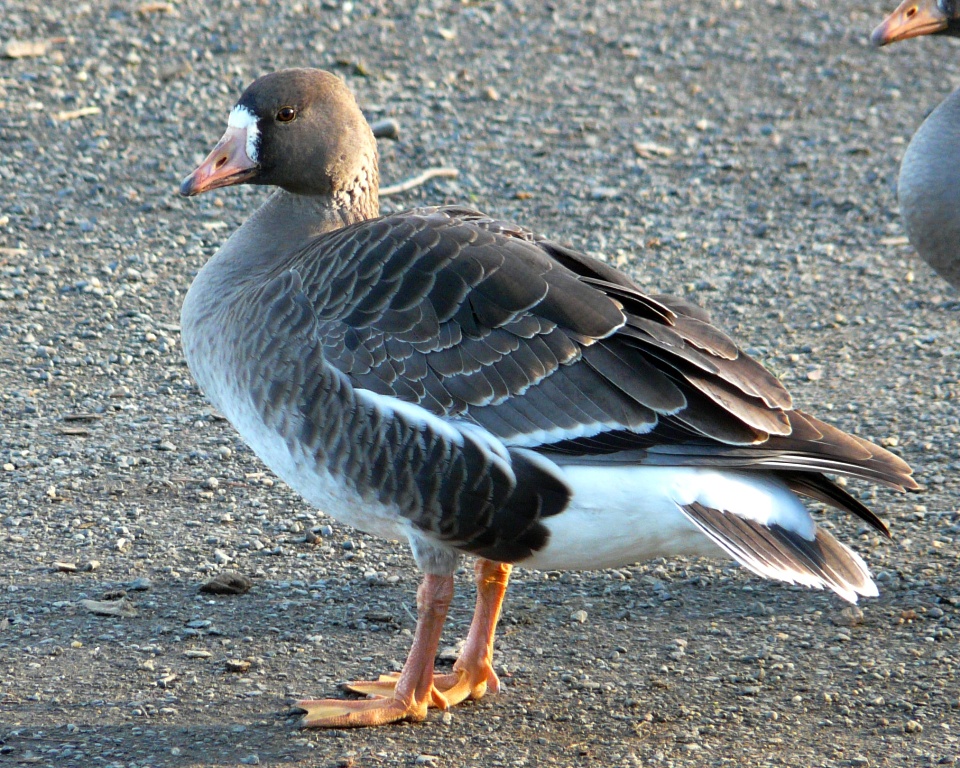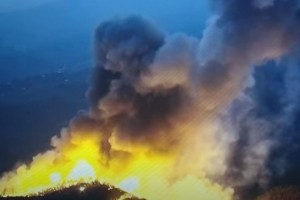Greater white–fronted goose: Red Data Book of Armenia

Ducks, geese and swans — Anatidae
Status. A migratory, nesting and wintering rare species of limited distribution. Listed in the IUCN Red List of Threatened Species (ver. 3.1) as Least Concern. According to IUCN criteria categorized as Vulnerable VU B1ab(iii)+2ab(iii).
Distribution. Distributed on the islands of the Arctic Ocean, in maritime tundra from the White Sea to the Chukotka Peninsula, in North America’s tundra, Greenland and Iceland. Winters in Europe and Asia.
Distribution in Armenia. Occurs during the spring and autumn migrations on the lakes Sevan and Arpi and in the Arax riverside. Winters in the Arax riverside, but not every year.
Habitats. For nesting prefers the areas of tundra with abundant shrubs, rivers and lakes. In winter lives in fields, grasslands and near the water bodies.
Biological traits. Nests are built on grassy hillocks, sometimes on ground and sand. The bottom of the nest is littered with dry grasses and, over them, fledged with thick layer of down. Eggs are whitish, 3–7/clutch, size 70–81 mm. The brooding period is 26–28 days. Hatchlings are carefully looked after by their parents.
Population size and its trends. Has always been rare. The flocks of 10–20 individuals can be recorded during migrations and wintering.
Major threats. Disturbance and poaching in the Lake Sevan basin and the Arax riverside.
Conservation measures. Protected in Sevan National Park and Lake Arpi National Park. It is essential to estimate population size during migrations and wintering, ensure proper conservation and to strengthen anti–poaching activities.
Suggestions
 The Ministry of Environment sent a letter international partners to draw their attention to the real danger of environmental disasters as a result of Azerbaijan's large-scale aggression towards the territory of Armenia
The Ministry of Environment sent a letter international partners to draw their attention to the real danger of environmental disasters as a result of Azerbaijan's large-scale aggression towards the territory of Armenia
 The Minister of Environment addressed a letter to international organizations and partners
The Minister of Environment addressed a letter to international organizations and partners
 ECOCIDE ALERT IN THE SOUTHERN CAUCASUS! White phosphorous munitions are dangerous chemical weapon
ECOCIDE ALERT IN THE SOUTHERN CAUCASUS! White phosphorous munitions are dangerous chemical weapon
 Vicia pisiformis: Red Data Book of Armenia
Vicia pisiformis: Red Data Book of Armenia
 Vavilovia formosa: Red Data Book of Armenia
Vavilovia formosa: Red Data Book of Armenia












